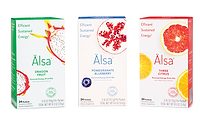Casks, oak-barrel aging and complex full-bodied flavor is synonymous with wine. But craft brewers are changing that. Today, craft beer brewers are doing more with exotic ingredients and time-honored processes typically reserved for grapes. Courting millennials who are thirsty for variety and uniqueness in small-run releases, leading brewmasters are constantly testing new ingredients.
Citrus-flavored yuzu wood and slightly gamey beef hearts aren’t flavors usually on tap, but Samuel Adams isn’t afraid to ask “what if” and test anything to arrive at its seasonal additions. All ideas – and tastes – are considered to create just the right profile, Jim Koch, founder and brewer of Samuel Adams at The Boston Beer Company, says.
“Last year alone, we released more than 60 beers brewed with interesting ingredients from fruits like cherry, pineapple and blackberry to flowers and plants such as rose hips and juniper as well as spices such as grains of paradise and tamarind, to name a few,” Koch says. “We also experiment with using unique yeast strains, brewing methods, dry-hopping and dry-spicing methods, blending liquids, as well as barrel aging.”
It’s part of the company’s history to expand palettes. The original release of Samuel Adams Boston Lager in 1984 first introduced wine-drinking consumers to complex flavors in a full-body brew. However, millennials with more sophisticated palettes, want more variety more often.
“Our seasonal brews include Summer Ale, brewed with Grains of Paradise (a spice from Africa also known as a Melegueta pepper) and lemon zest, OctoberFest, a marzen style that is a malt lover’s dream, is available in the fall. Winter Lager, a spiced wheat bock, perfect for the colder months and holiday season and uses a blend of Indonesian and Vietnamese cinnamons, ginger and orange peel,” Koch says.
The release of Cold Snap this spring showcases 11 unique ingredients including coriander, hibiscus, plum powder, anise, tamarind, lemon and orange zest, grains of paradise, vanilla and rose hips, according to Koch.
The desire to “never settle” is the key to being innovative, Assistant Brewmaster Ryan Schmiege at Deschutes Brewery, says. “[It’s] our motivation
when we develop all new products, including those with non-traditional ingredients.”
The Bend, Ore.-based brewer experiments with flavors beyond fruits and spices. Deschutes Brewery staff work closely with its brew pubs, using more obscure ingredients such as cubeb, meadowsweet, sumac and oysters, which contribute to brew depth and complexity, Schmiege says.
“When working at our pubs, our brewers have very few limitations placed on their experimental recipes,” he says. “Similarly within our sour and cask beer programs, we allow a great deal of freedom for experimentation.”
Recent launches include Zarabanda, which was developed in collaboration with Chef José Andrés. Sumac and dried black lime were introduced to a pink peppercorn and lemon verbena combination late in testing.
“We were looking to incorporate spices that evoked some of [the Chef’s] background and influences on his cooking while also simply to make a beer that is incredible for pairing with foods,” Schmiege says.
Deschutes Brewery’s imperial stout, The Abyss, uses blackstrap molasses and brewers licorice, according to Schmiege.
“Both of these ingredients provide additional utility, beyond malt, for complete absorption of light while also adding to the viscosity of the beer,” he says.
Saint Arnold Brewery’s 2,000-square-foot barrel room accommodates more than 200 barrels from California and Kentucky. Currently, the Houston-based brewery ages old ales, barley wines and imperial IPAs for future Bishop’s Barrel releases. Saint Arnold uses the barrels one time before they are retired, which adds uniqueness to beers produced in the oldest craft brewery in Texas.
“It has been two and a half years since we bottled our first Bishop’s Barrel beer and we are enjoying the creative freedom that this series gives us,” Brock Wagner, Saint Arnold founder and brewer, says. The April release of No. 9 is a testament to richness and quality that both time and lineage provide.
Saint Arnold Bishop’s Barrel No. 9, for example, is imperial pumpkin stout aged for seven months in Woodford Reserve and Willett Bourbon Barrels in the brewery’s climate controlled Barrel Room. The base beer of Saint Arnold Bishop’s Barrel No. 9 is Saint Arnold Pumpkinator.
However, Wagner and other brewmasters caution against going too far off the beaten path.
“You can easily brew a beer with crazy ingredients that is appealing for a sip or two, but often that is all you want,” St. Arnold’s Wagner says. “Our goal is to release beers that you want to finish an entire pint of and then be thirsty for another (which may or may not be advisable).”
There are also formulation challenges and regulations that can prohibit prolific use of unusual ingredients beyond water, malt, yeast and hops, according to Deschutes Brewery’s Schmiege.
“Formulation challenges can range from processing difficulty to TTB approval [if not on the list of exempt ingredients],” Schmiege says. Working with fruits, for instance, also requires experience with enzymes and filtration techniques to avoid haze issues, he adds.
“Occasionally we may have to change how we approach a beer as well,” Schmiege says. “An example of this is a beer one of our brewers made at our public house in Bend that used local, natural, hand harvested sage. Once we went for TTB approval we had to reformulate to culinary sage or that which is grown specifically to use in food production.”




